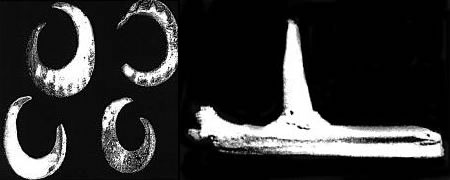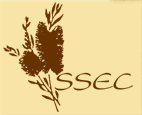 • First Australians
• First Australians
• Capatin Cook
|
Origins |
The First Australians
Aborigines migrated to Australia some 35,000 years before white man, and brought their pet dog, the dingo with them. In 1788, when the First Fleet arrived, there were an estimated 300,000.
Aboriginals in Australia. In the first half of the 19 th century traditional Aboriginal lifestyle quickly disintegrated. Culture, ceremonies and artefacts and were suppressed and disease reduced their numbers by more than half. By 1914 the population had declined to a mere 20,000; and it was assumed that Aborigines would eventually die out. This, thankfully, was not to be. By 1980, with the aid of improved medical services, and their own adaptation, the population of Australia's original inhabitants had swelled to about 150,000, and is soon expected to reach 300,000 again.
Anthropologists influenced administration to turn public opinion towards a more positive appreciation of Aborigines and their culture. This did not begin in Australia until 1926 and it was not until 1967 that the Australian Aborigines were given the right to vote. But despite NPWS forming a Cultural Heritage Division in 1967, the Department of Aboriginal Affairs was not established until a Tent Embassy was set up on the lawns of Parliament House in Canberra in 1972. Traditional Aborigines
The Australian Aborigine was a hunter and food collector. He took only what was necessary for immediate needs. He was one with and part of his natural environment and depended on it for survival. For those who place emphasis on elaborate technology and material wealth it is difficult to understand those who do not, and so neglect the complexity and richness of the Aboriginal lifestyle.
Aborigines made fire long before any contact with white man and they built rafts and canoes and they fished with spears and fishing lines. |
 |
Clothing was minimal, and consisted of a woven hair waistband in which to carry tools and weapons, and maybe, a possum-skin coat to wear in winter. The economy relied on the natural resources of the countryside. They were tradition orientated, and shared the same life-essence with all species and elements in the environment. This is the concept of the Dreamtime. The whole land was sacred with special sites of specific importance. Aborigines were the religious (spiritual) and occupational guardians of their tribal land.
In Aboriginal Australia, children grow up accepting tribal custom unquestionably. Pregnant women talk to their babies in the womb, telling them of folklore, customs, family histories, myths; and they speak to the infant from the day it is born. Children grow up learning their culture in day to day conversation. Discipline for the children is maintained within the family. For breaches of Sacred Law, ritual leaders, the Tribal Council, decide on the appropriate punishment and for significant breaches there would be a gathering of many tribes at special punishment grounds.
Traditional custom is a powerful factor. Oral history, spiritual matters, myths and gossip songs are told around the evening campfire within a clan, or with a corroboree when there was a gathering of tribes. Drawings and paintings relay tribal or religious customs, depict food availability, display items available for trading (like an advertising notice board), or are done just to pass the time. The Kurnell Aborigines
A typical Aboriginal tribe (gal) consisted of about 20 to 50 kinsmen living in their own territory and speaking their own dialect. Eora people, from the Port Jackson region (known as Cadigal) spoke a language distinctly different from the Dharawal whose territory extends from Kurnell Peninsula to Nowra in the south and west to Camden. The Aborigines of Kurnell were the Gweagal people, and according to Beryl Beller, Elder of the Gweagal people today Dharawal is like a state; Gweagal is like a shire within the state; Cunnel (Kurnell) is a family village within the shire. There was no written language and it was the dialect that distinguished the separate tribes. The Gweagal Aborigines hunting, gathering and above all fishing around the southern shores of Botany Bay and the Georges River were the most northern tribes of the Dharawal-speaking people. They lived well from their abundant living pantry of plants, animals and seafood. They fished, using barbed spears and fishing lines with hooks, from the shore or from rafts and canoes. The abundance of fish and other foodstuffs in these heavily timbered waterways meant that these natives were less nomadic than those of inland Australia were. The numerous middens, rock carvings and paintings in the region confirm this. |
 |
| The Kurnell Aborigines were the guardians of the sacred white clay pits on their territorial land. "Aborigines would walk hundreds of miles to get that white clay, it was so sacred!" The white clay had a multitude of usesit was used to line the bottom of the canoes to make a base for the fires and it was used as the white body paint Cook wrote of witnessing. The clay was tinted with berries to produce brightly coloured paint for ceremonies and corrobories. It was eaten as a medicinean antacid, and it was mixed with geebungs and other local berries and eaten as a dietary supplementthis clay contains zinc! Through the years its use has evolved and it is reported to still be the best white cleaner there is for tennis shoes. Even today, according to descendents of the clan, "Aboriginal women get the cravings for that white clay when they're pregnant." |
 |
| The Aboriginal name for Kurnell was pronounced by the Aborigines Cunnel (one syllable). Places were often named after longstanding families. Cundlemong (pronounced Cunnelmong ) was the last full-blood Kurnell born elder, a chief, and according to today's Aborigines the name Cundlemong was a family name and that name could be a thousand years old, passed down the line. This appears to have been corrupted by the whites to Colonel . It is thought that Thomas Holt combined the two words to make Kurnell , though Margery Hutton Neve wrote that the word might be a corruption of the native pronunciation of an early settler's name - Connell . |
| Top of Page |
|



